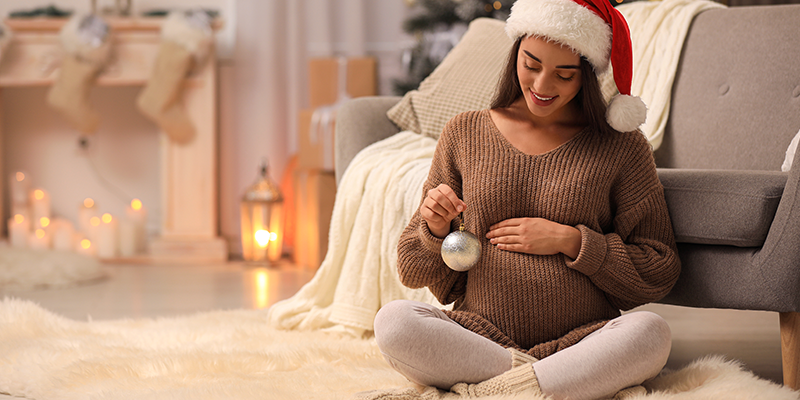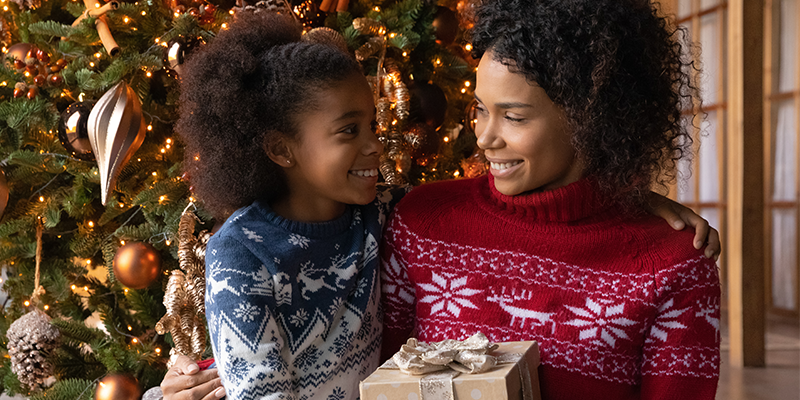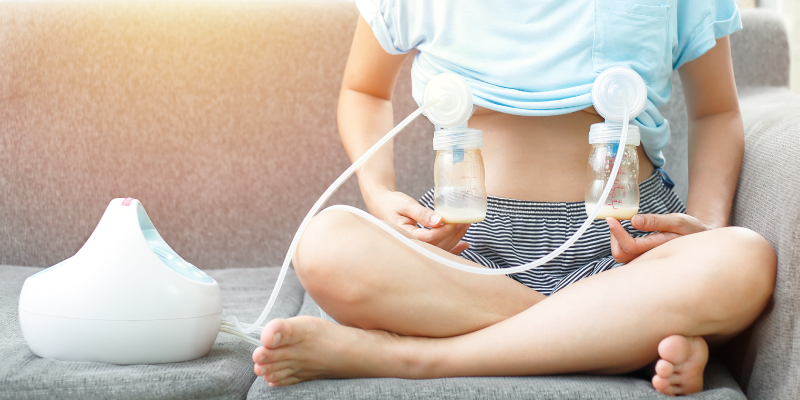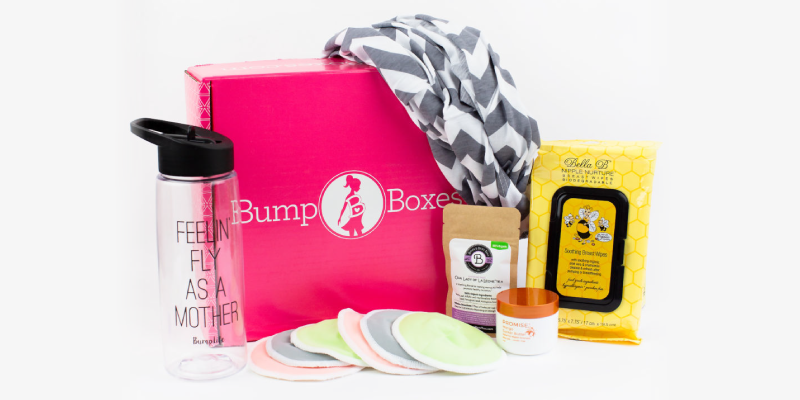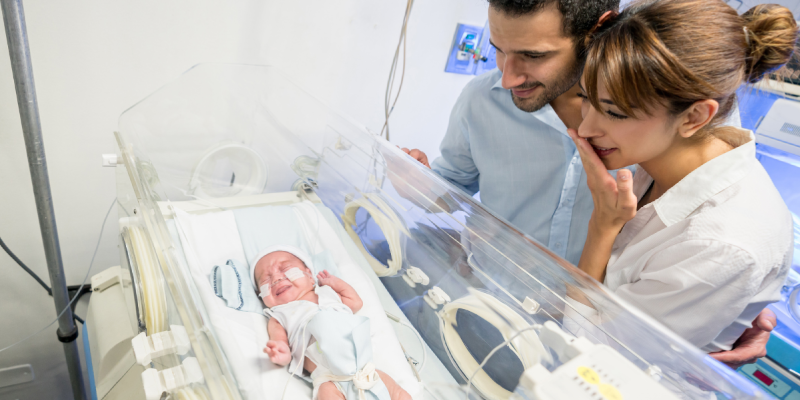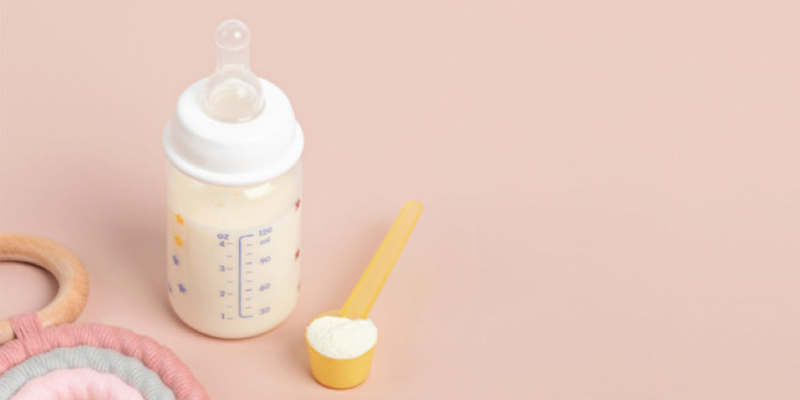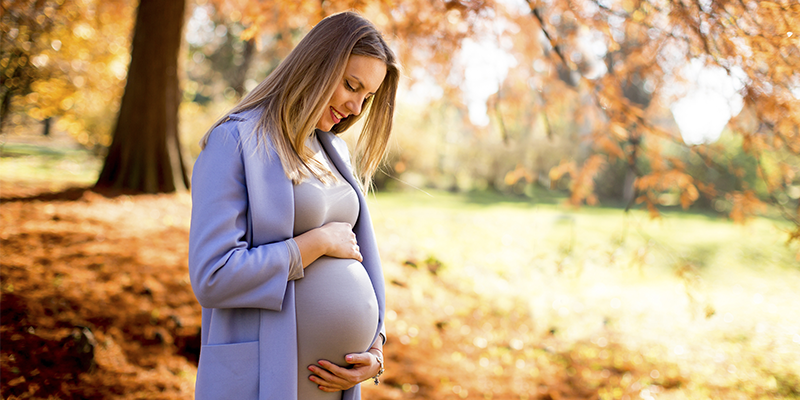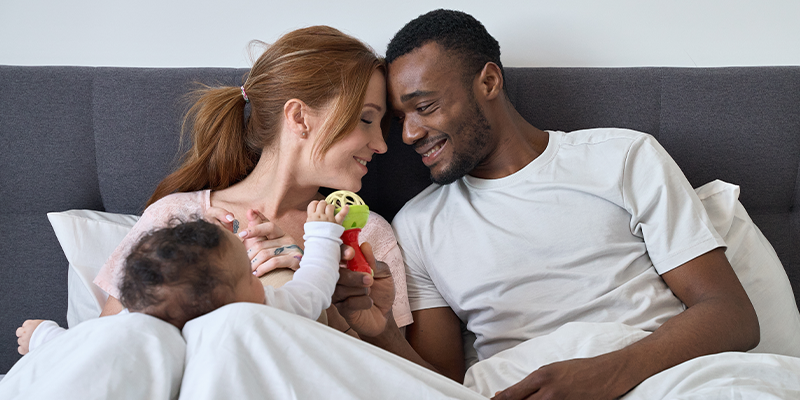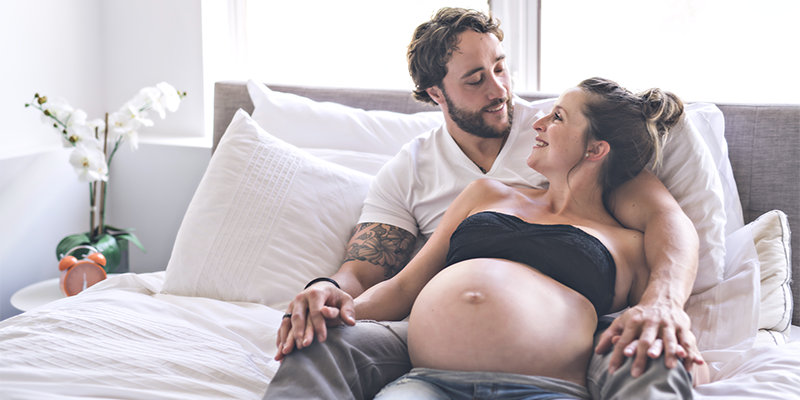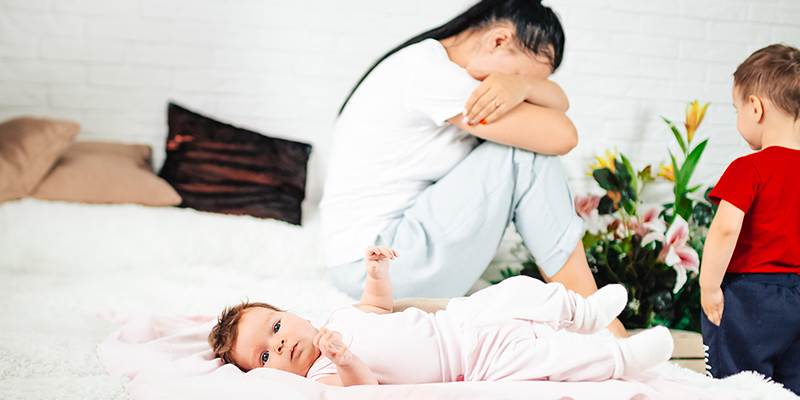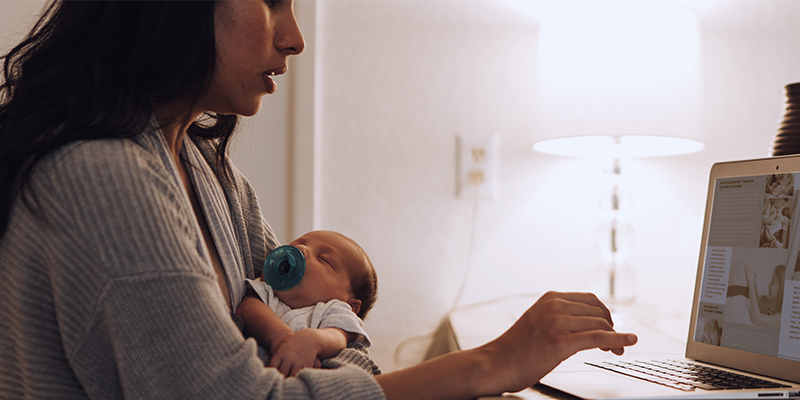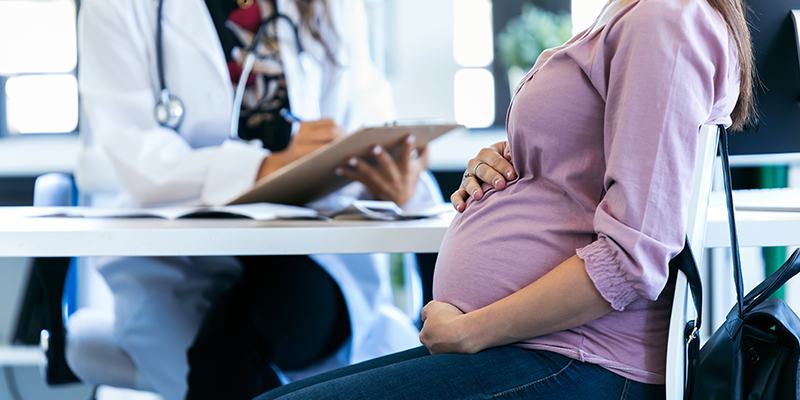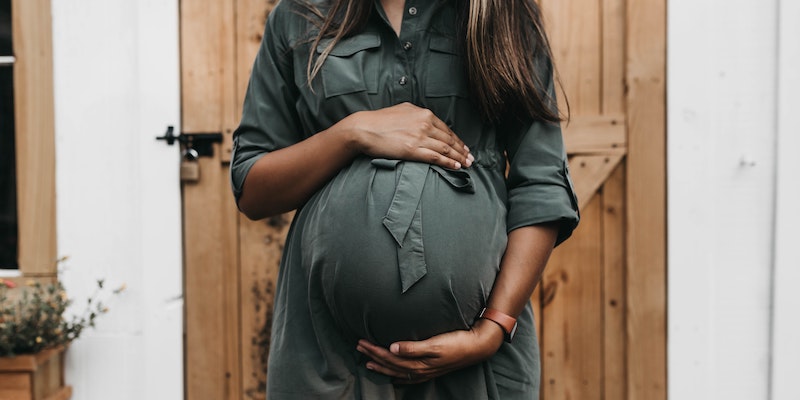How to prepare for baby: from prenatal doctor visits to baby’s arrival home
At Bump Boxes, we’re always thinking of ways to support Moms and erase some of the unknowns for Moms-to-be. After all, Bump Boxes was birthed because our founder was pregnant and realized just how much there was to know + do to prepare for a new baby.
So, we thought we’d put our maternal minds + experience together in a checklist designed to help Moms-to-be organize and prepare for a new baby.
Here’s what this guide covers…
- Insurance: Checking with your health insurance to review pregnancy benefits and find a prenatal doctor your insurance covers (click here).
- Doctor’s Appointments: Making prenatal appointments + the number of appointments you will typically have (click here).
- Prenatal Testing (click here)
- Amniocentesis
- Chorionic Villus Sampling (CVS)
- Glucose testing to check for gestational diabetes
- A screening for Group B strep cultures
- Birth Plan (click here)
- Wishes before labor
- Preferences for labor and delivery
- Who you’ll want or not want in the delivery room with you
- Requests for newborn procedures
- Classes (click here)
- Childbirth classes
- Breastfeeding classes
- Infant-care classes
- Maternity Leave: Planning and tips (click here)
- Baby-Proofing your home (click here)
- Buying and installing outlet covers
- Anchoring heavy furniture or items that could tip and fall over
- Lowering the temperature on your hot water tank (below 120 degrees Fahrenheit) to avoid accidental skin burns
- Installing child locks on cabinets
- Stowing away all small objects or anything that could be considered a choking hazard
- Cushioning sharp corners with foam padding
- Installing safety gates at every staircase
- Locking windows and replacing/removing blinds with cords
- Putting all cleaning supplies out of reach
- Keeping doors locked and reserving a safe space for baby to play and rest
- Using a crib with safety rails and pairing it with a firm mattress. Leave blankets, pillows, toys, and other objects outside of the crib. And forget crib bumpers, they’re not necessary and can pose a hazard.
- Baby Products: Buying baby’s essentials and planning your registry (click here)
- A reliable crib and crib mattress
- A rocking chair for nursing
- A changing table with changing pad (and it doesn’t hurt to keep a spare changing pad around)
- Diapers
- Disposable wipes
- Baby ointment and applicator
- Bibs
- Burp cloths
- A diaper bag
- A couple of pacifiers
- A safe car seat and stroller
- A baby thermometer
- Onesies
- A few pairs of pants
- Swaddles
- Newborn hats
- Socks
- Scratch mittens
- Hospital Bag: Packing your overnight bag for the hospital (click here)
- A good labor gown
- Comfortable non-slip socks
- Loungewear to change into
- Breastfeeding supplies
- Phone charger
- Breastfeeding Prep: Stocking up on the different items you’ll need for breastfeeding (click here)
- Breast pump
- A breastfeeding accessory kit with things like bottles, extra breast pump parts, and cleaning accessories
- Disposable breast wipes and nursing pads
- Nipple butter
- A cooler kit to keep bottles of breastmilk chilled
- Meals and Returning Home: Planning meals for your return home from the hospital, and looking to family to help during those first several days (click here).
- Best Pregnancy Products: Products for morning sickness, back pains, and other pregnancy symptoms (click here).
1. Review your health insurance coverage + choose a reliable prenatal doctor (don’t forget to search pediatricians for after birth, too)

If you have health insurance, you have maternity coverage, but not all coverage is equal. It’s best to check with your provider to learn what services are covered and what benefits are available. All providers should cover prenatal and postnatal doctors appointments, inpatient services (such as your hospital stay after delivery), newborn baby care, and lactation counseling and devices (including breast pumps).
You can even check with your provider to see what OB/GYNs accept your specific insurance, making it easier to narrow down the best prenatal doctor for you and your baby. On that same note, you can search for pediatricians for your baby. Doing all of this research upfront, or even better, in one phone call or email, can save you stress later on down the line.
2. Plan your prenatal doctor’s visits

After finding a good prenatal doctor/OB, you’ll want to plan your check-ups so you know how often your doc will want to see you. Sometimes, you can schedule a chunk of visits all at once, or you can plan check-up to check-up after each appointment.
Even if your doc doesn’t mention anything about a follow-up visit, it’s still good to ask about scheduling before you leave each appointment, as pregnant women do need to see their prenatal doc on a regular basis up until they give birth. Double-checking can prevent you from accidentally missing any crucial visits or prenatal testing. And of course, the more appointments you can schedule up front, the more flexibility you’ll have with scheduling, which can be super helpful if you work.
Typically, you can expect to visit your prenatal doctor once a month for the first 6 months (up until week 28), once every two weeks during months 7 and 8 (weeks 28 to 36), and once a week during the last month of pregnancy (weeks 36 to 40).
3. Talk with your healthcare provider about the necessary prenatal testing
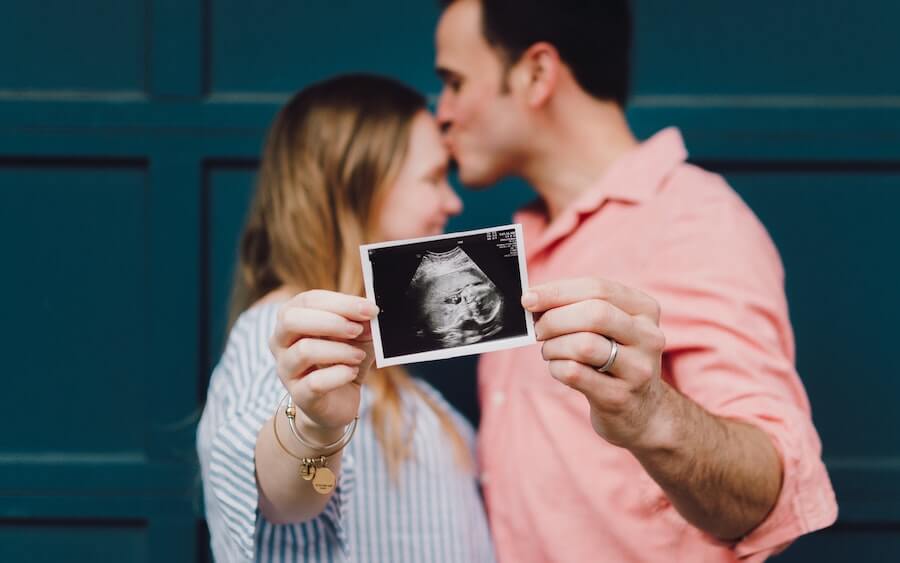
Speaking of prenatal testing, make sure you talk to your doc about all of the necessary screens and tests to be done during pregnancy. Obviously, regular ultrasounds to monitor fetal development will be required, but docs will also recommend genetic screening, maternal blood tests, fetal heart rate monitoring, and other testing, including:
- Amniocentesis
- Chorionic Villus Sampling (CVS)
- Glucose testing to check for gestational diabetes
- A screening for Group B strep cultures
You may not need to undergo all of this testing, so it’s always best to take your doctor’s advice on what’s needed and what’s not. They’ll also offer guidance on when these tests should be scheduled.
4. Create a birth plan (birth wish list)
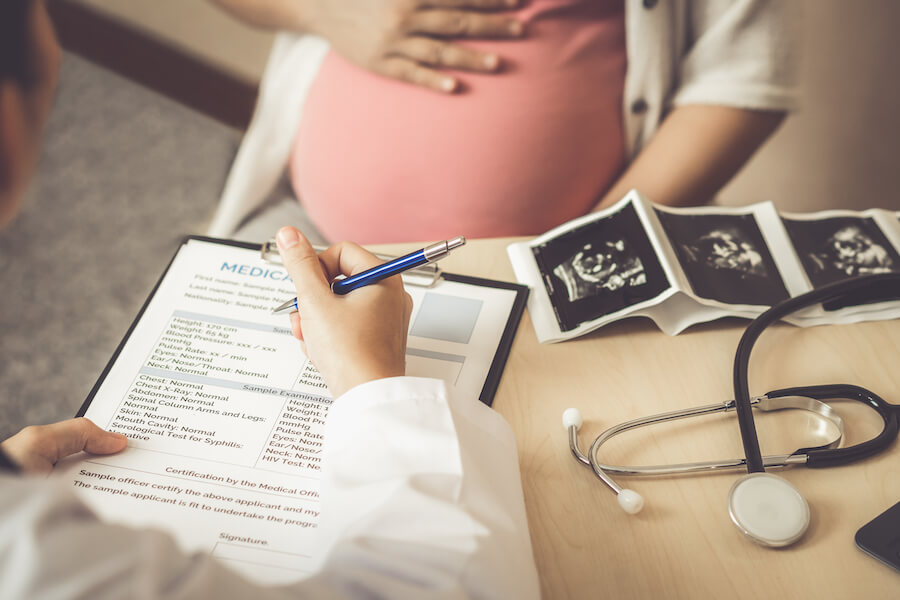
A birth plan or birth wish list is a list of preferences and expectations for labor and delivery. Many expecting women begin writing up their birth plans early on in their pregnancies. Your doctor will likely ask about yours around the end of your second trimester. Birth plans are helpful for all parties — Mom-to-be, practitioner, and partner — because they clearly communicate what you’d like and not like during labor and delivery. What’s included? Things like:
- Mom’s wishes before labor: What would make delivery more comfortable? How do you want your delivery room to be set up?
- Preferences for labor and delivery: Do you want to have an unmedicated birth or will you want an epidural for pain? Do you prefer a vaginal birth or C-section? Are you opposed to interventions, such as vacuum extraction, to assist with childbirth? Do you want minimal cervical checks?
- A list of who you want in the room with you: Do you want your entire family in the delivery room with you or just your partner? Are you open to having medical students in the room?
- Requests for newborn procedures such as PKU testing, Vitamin K shots, and vaccine administration.
You should think of your birth plan as your ideal preferences, but remember that birth doesn’t always go as planned. Think about and be clear about what you’d like, but know that not all birth plans can be followed exactly. Doctors will do their very best to carry out your birth plan to a T, but it’s good to remain flexible and not think of the birth plan as a set-in-stone contract.
5. Look into childbirth, breastfeeding, and infant-care classes if you’re anxious for baby’s arrival (or a first-time Mama about to navigate parenthood for the first time)
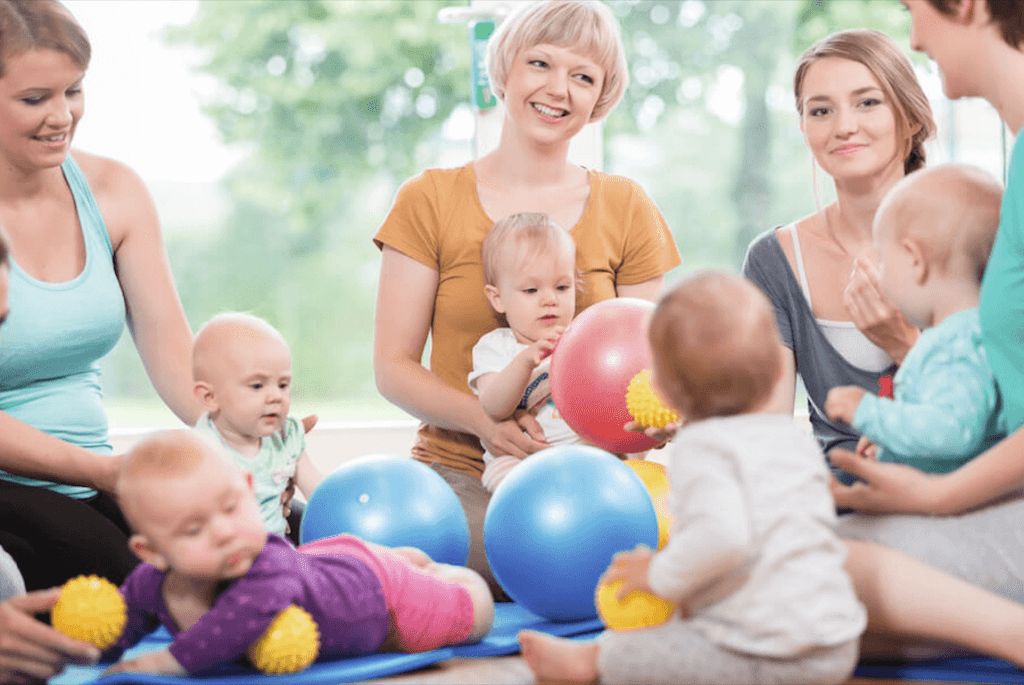
In addition to making a birth plan, you may want to find childbirth classes to ease any stress or worries about the big day. These are especially helpful for first-time Mamas, but can serve as a refresher for parents who’ve had some downtime between pregnancies. And don’t forget about pregnancy and parenting books, too, as these can be useful in guiding new parents.
Birthing classes can prepare you for what to expect during delivery, but breastfeeding and infant-care classes prep you and your partner for what’s to come after. Like birthing classes, these are usually recommended for first-time parents, as second-time parents usually have a good idea of what to expect around breastfeeding and bringing baby home. However, these classes are wonderful for all parents. They cover everything from baby-proofing your home (which we’ll talk about more later) to child and baby CPR.
Plus, many of these classes are held online, so you can do them from the comfort of your own home before giving birth. Typically, these can be done during middle- to late-pregnancy, but you can really take them at any point, even after the baby is born.
6. Talk with your employer about your options for maternity leave, and plan childcare for when you return to work
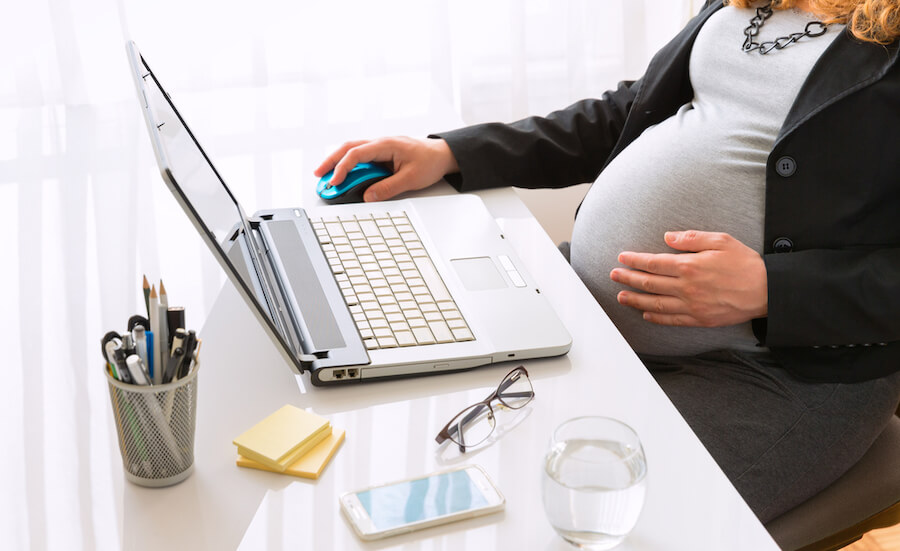
Most of the time, your employer will talk about your options for maternity leave when you disclose that you’re pregnant, but if they don’t, it’s good to circle back with them during middle to late pregnancy so you have all of your ducks in a row long before your due date.
Under the Family and Medical Leave Act (FMLA), new Moms who work for companies with 50 or more employees + have worked with the company for over a year are entitled to 12 weeks of unpaid leave after giving birth, and FMLA even covers time off for dads and adopted parents. That said, many employers offer paid maternity (and sometimes paternity) leave as a benefit. They may also give you the option to use paid sick time or paid time off during your leave, or if you need more time with baby and postpartum care.
If you plan on going back to work after having your baby, it’s good to start looking into childcare at this point, too. You may want to take your kiddo to a daycare or hire an in-home caretaker. Many new parents also rely on family members to help out during this time. If the idea of leaving your newborn and returning to work isn’t exactly comforting, having baby stay with a loved one during the workday can make that transition easier.
7. Baby- and pet-proof your home, and complete any essential home repairs while you’re at it
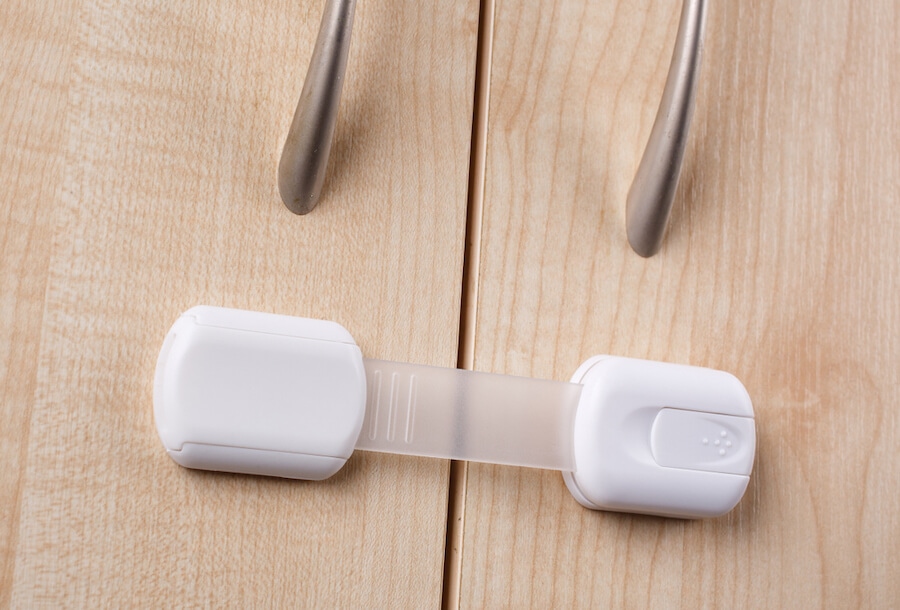
Once the second trimester rolls around, it’s time to start thinking about baby-proofing your home. We recommend doing a full sweep of the house to make sure the basics are covered (i.e., carbon monoxide detectors and smoke alarms are functioning properly, no major repairs are necessary). Then, it’s time to start thinking about:
- Buying and installing outlet covers
- Anchoring heavy furniture or items that could tip and fall over
- Lowering the temperature on your hot water tank (below 120 degrees Fahrenheit) to avoid accidental skin burns
- Installing child locks on cabinets
- Stowing away all small objects or anything that could be considered a choking hazard
- Cushioning sharp corners with foam padding
- Installing safety gates at every staircase
- Locking windows and replacing/removing blinds with cords
- Putting all cleaning supplies out of reach
- Keeping doors locked and reserving a safe space for baby to play and rest
- Using a crib with safety rails (but be sure to lower them as the baby gets old enough to pull themselves out) and pairing it with a firm mattress. Leave blankets, pillows, toys, and other objects outside of the crib. And forget crib bumpers, they’re not necessary and can pose a hazard.
8. Set up baby’s nursery, buy the essential baby gear, and plan your registry
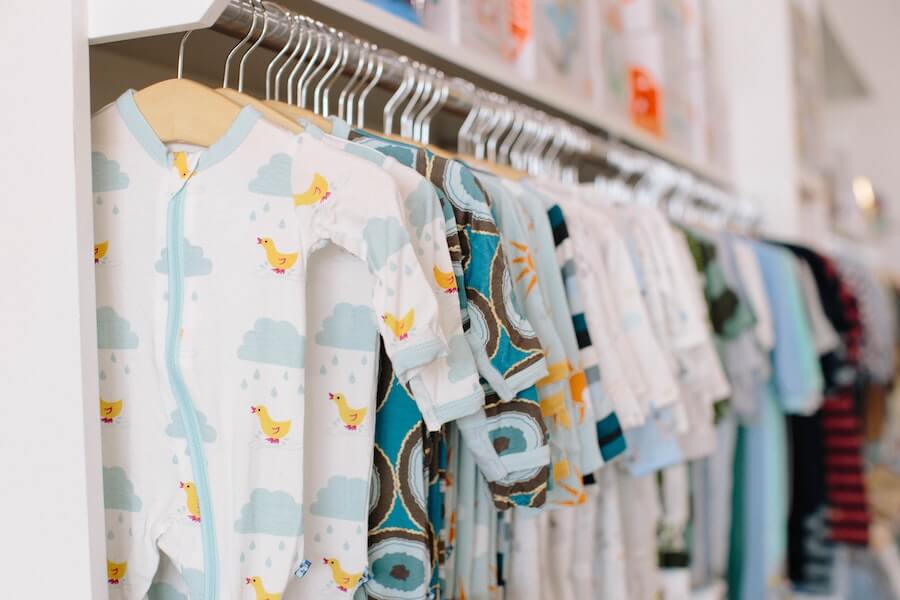
Excited new parents often start putting their baby’s nursery together as early as month three of pregnancy, but this can wait until the second trimester if you prefer to hold off. Just be sure to keep a pulse on the supply chain, ‘cos sometimes nursery furniture can take ages to arrive.
Many parents stock the nursery with:
- A reliable crib and crib mattress
- A rocking chair for nursing
- A changing table with changing pad (and it doesn’t hurt to keep a spare changing pad around)
- Diapers
- Disposable wipes
- Baby ointment and applicator
- Bibs
- Burp cloths
When it comes to clothing and other ‘must-haves’ for the baby, here’s what you *really* need:
- A diaper bag
- A couple of pacifiers
- A safe car seat and stroller
- A baby thermometer
- Onesies
- A few pairs of pants
- Swaddles
- Newborn hats
- Socks
- Scratch mittens
If your baby is born in the colder months, you’ll also want a jacket to keep your newborn warm.
For bathtime, you’ll want to buy…
And lastly, infant laundry detergent is needed for cleaning baby’s clothes. If you use a fragrance-free, gentle detergent already, that may suffice. If not, look for one that’s made specifically for new babes.
Seeing dollar signs? The good news is you can put many of these items on your baby registry, which we suggest putting together before you send invitations to the baby shower. Many Moms have their baby shower around the 6-month mark. Planning your shower around this time is beneficial for a number of reasons, one of which is that it gives you time to assess what you still need to purchase before baby’s born.
9. Pack your hospital bag
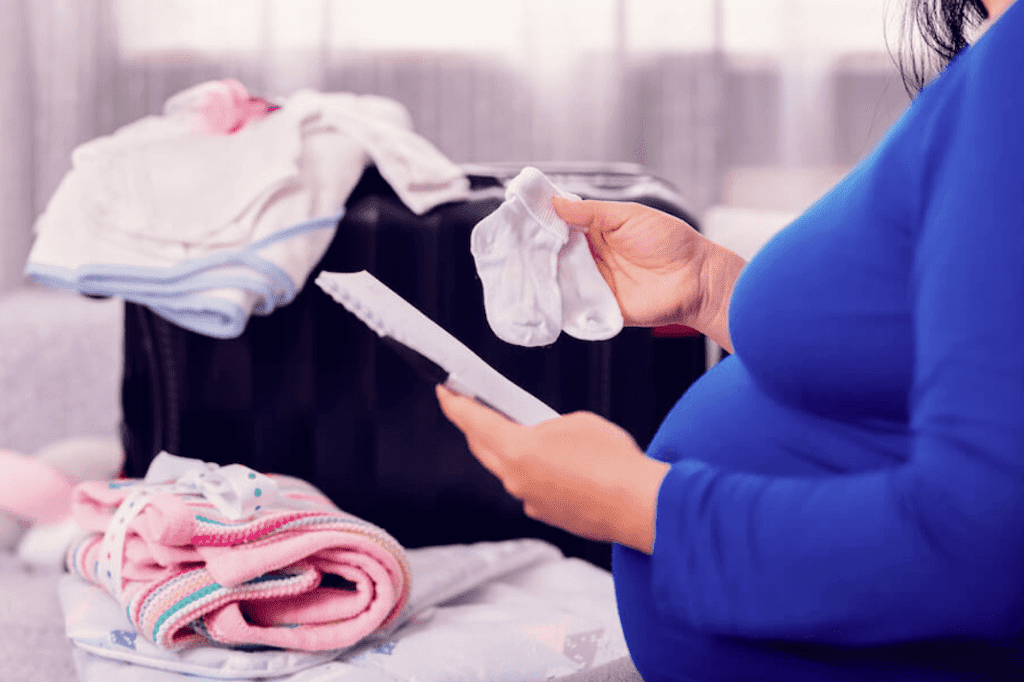
While stocking up on baby goods, it doesn’t hurt to prep your delivery day bag, too. You’ll want to include items for both yourself and baby in the hospital bag.
We also suggest bringing along anything else you think will make your stay in the hospital more comfortable. We’ve got a great hospital checklist for you, baby, and your partner, so be sure to check it out.
When it comes to items for a new baby, bring:
- A package of diapers and baby wipes
- A going home outfit for baby
- A carseat cover to keep baby cozy during the ride home
Of course, you’ll also want to install the baby’s carseat ahead of time, too.
10. Stock up on the things you’ll need for breastfeeding
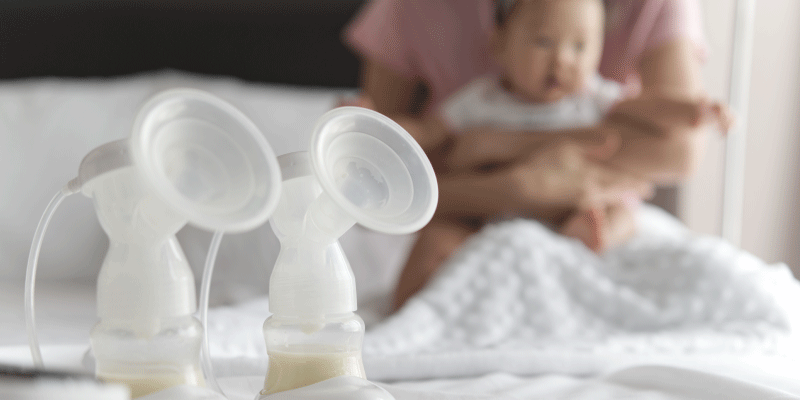
While we’re on the subject of preparing for baby and labor, we should touch on breastfeeding supplies. Many insurance providers will cover the full or partial cost of a breast pump for each pregnancy.
How do you know what you qualify for? The easiest way to find out is to fill out our free breast pump form and let our insurance-savvy nerds look into your benefits for you. If we’re in network with your insurance, we’ll tackle all the logistics for you and ship your pump right to your doorstep at no charge.
Not sure what type of breast pump will be best for your lifestyle and needs? Check out our ultimate guide to choosing the best breast pump for you.

What else will you need in addition to a breast pump?
- A breastfeeding accessory kit with things like bottles, extra breast pump parts, and cleaning accessories
- Disposable breast wipes and nursing pads
- Nipple butter to ease some of breastfeeding’s discomforts and prevent dry, cracked nipples
- Lastly, for on-the-go Moms, a cooler kit to keep bottles of breastmilk or formula chilled
11. Plan meals and employ help from family
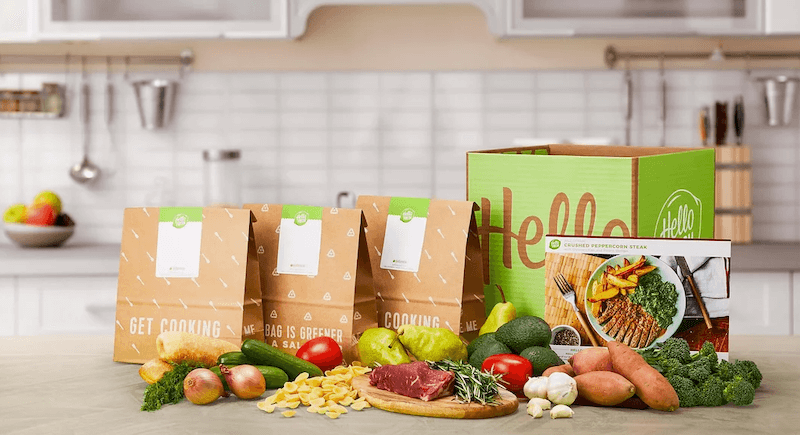
One of the last things you’ll need to do to prep for your little one is plan for your first days back at home. You’ll probably want to have some meals prepared and ready to reheat in those first few days, but many new parents love the convenience of a food service like HelloFresh or Blue Apron.
Other new parents who are lucky enough to live near family may rely on their parents (baby’s grandparents) to cook a few meals and watch their little one while they rest and recoup during the first weeks. Just make sure you fill grandparents in on what you’ll need so they can plan and be ready.
12. Stock up on the best pregnancy products for morning sickness, back pains, and other pregnancy symptoms
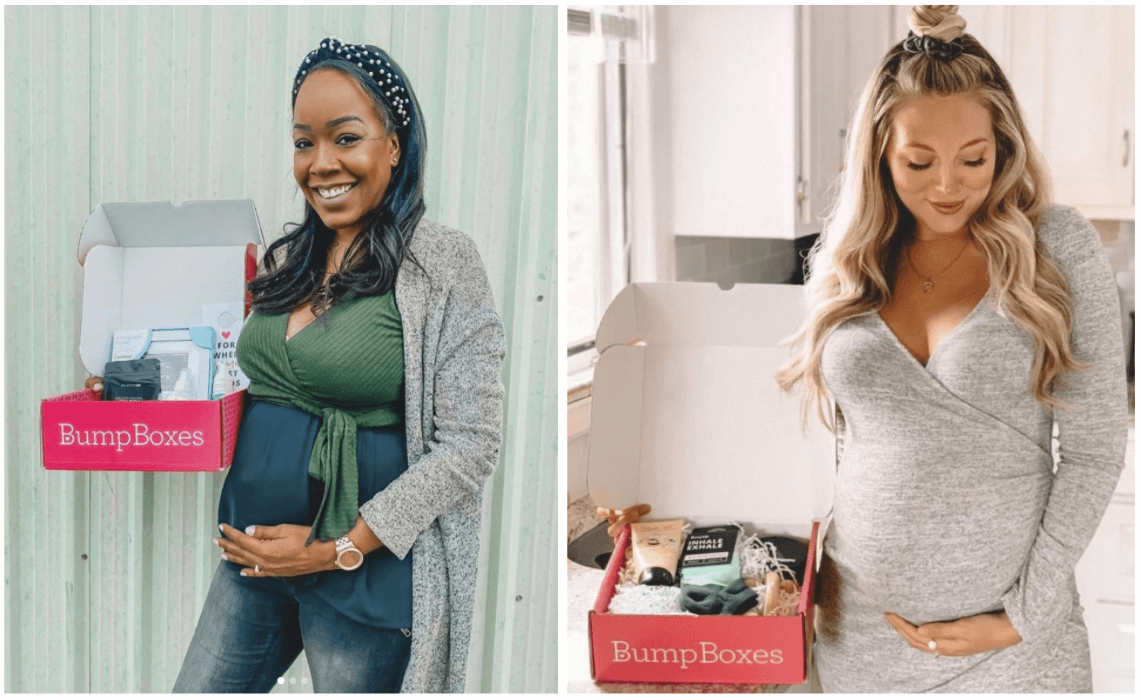
Okay, so now you know what you need to prep for baby, but what about prepping for all the challenges and discomforts of pregnancy? We’ve got you.
Bump Boxes started because we wanted to support Moms and Moms-to-be during the beautiful, but not always pleasant, pregnancy journey. When you subscribe, each month you’ll get a box of pregnancy-safe products chosen to help with the exact things you’re facing at each point in pregnancy. That way, you get just what you need, right when you need it, without scouring the internet or Googling for hours on end.
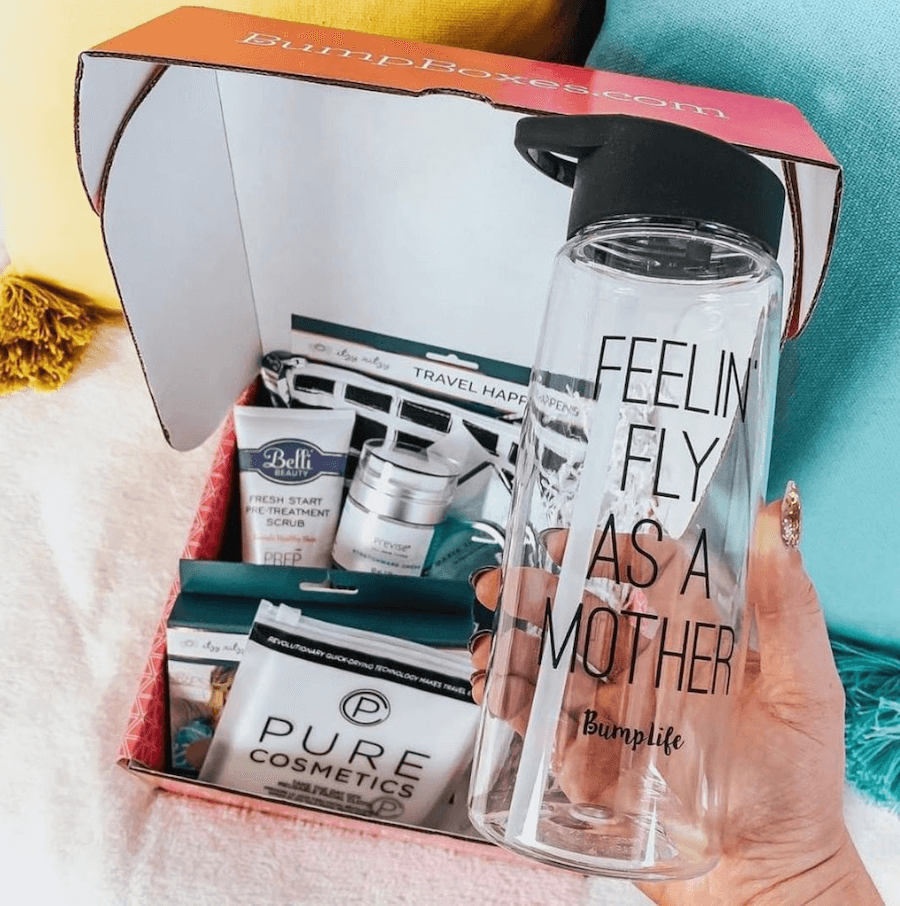
The most convenient part of all? We ship our Bump Boxes straight to your doorstep.
- In the first trimester, you can expect morning sickness remedies and organic spa and skincare goodies from our all-natural skincare line — Glow Organics, plus other trustworthy brands.
- During the second trimester, we typically send products to help with back pains and creams for stretch marks and itchy bellies.
- Once the third trimester rolls around, you’ll receive helpful items for your hospital bag, essentials for breastfeeding, and of course, fun gifts to celebrate your pregnancy and get you excited to meet your baby.
To make life even easier, we sell everything found in our Bump Boxes a la carte on our site, so you don’t have to go searching the internet to restock your favorite items.
So, there you have it: a rundown of all the things you’ll need to do to prepare for baby’s arrival. Keep in mind as you run through the list that this is a time to be savored. Take care of yourself and cherish each milestone of this pregnancy. A little self care throughout your pregnancy can keep stress levels down and help you enjoy this special time.



